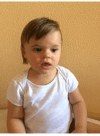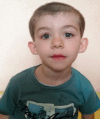The overlapping of phenotypes in Wiedemann-Steiner, Kleefstra and Coffin-Siris syndromes: a study of eleven patients
- PMID: 39294711
- PMCID: PMC11411858
- DOI: 10.1186/s13052-024-01763-1
The overlapping of phenotypes in Wiedemann-Steiner, Kleefstra and Coffin-Siris syndromes: a study of eleven patients
Abstract
Background: Some chromatinopathies may present with common clinical findings (intellectual disability, brain and limb malformation, facial dysmorphism). Furthermore, one of their cardinal shared features is growth dysregulation.We aimed to assess and deepen this resemblance in three specific conditions, namely Wiedemann-Steiner (WDSTS), Kleefstra (KLEFS1) and Coffin-Siris syndrome (CSS1), with a particular focus on possible metabolic roots.
Methods: Eleven patients were enrolled, three with WDSTS, five with KLEFS1 and three with CSS1, referring to Fondazione IRCCS Ca' Granda Ospedale Maggiore, Milan, Italy. We performed both a physical examination with detailed anthropometric measurements and an evaluation of the patients' REE (rest energy expenditure) by indirect calorimetry, comparing the results with age- and sex-matched healthy controls.
Results: We observed new clinical features and overlap between these conditions suggesting that different disturbances of epigenetic machinery genes can converge on a common effect, leading to overlapping clinical phenotypes. The REE was not distinguishable between the three conditions and healthy controls.
Conclusions: Epigenetic machinery plays an essential role both in growth regulation and in neurodevelopment; we recommend evaluating skeletal [craniovertebral junction abnormalities (CVJ) polydactyly], otolaryngological [obstructive sleep apnea syndrome (OSAs), recurrent otitis media], dental [tooth agenesis, talon cusps], and central nervous system (CNS) [olfactory bulbs and cerebellum anomalies] features. These features could be included in monitoring guidelines. Further studies are needed to deepen the knowledge about energy metabolism.
Keywords: ARID1B gene; EHMT1 gene; KMT2A gene; Chromatinopathies; Epigenetic machinery; Indirect calorimetry; Intellectual disability; Rest energy expenditure.
© 2024. The Author(s).
Conflict of interest statement
The authors declare that they have no competing interests.
Figures



Similar articles
-
Striking phenotypic overlap between Nicolaides-Baraitser and Coffin-Siris syndromes in monozygotic twins with ARID1B intragenic deletion.Eur J Med Genet. 2020 Mar;63(3):103739. doi: 10.1016/j.ejmg.2019.103739. Epub 2019 Aug 14. Eur J Med Genet. 2020. PMID: 31421289
-
Identification of de novo mutations for ARID1B haploinsufficiency associated with Coffin-Siris syndrome 1 in three Chinese families via array-CGH and whole exome sequencing.BMC Med Genomics. 2021 Nov 14;14(1):270. doi: 10.1186/s12920-021-01119-2. BMC Med Genomics. 2021. PMID: 34775996 Free PMC article.
-
Clinical features of SMARCA2 duplication overlap with Coffin-Siris syndrome.Am J Med Genet A. 2016 Oct;170(10):2662-70. doi: 10.1002/ajmg.a.37778. Epub 2016 Jun 5. Am J Med Genet A. 2016. PMID: 27264538
-
SMARCE1, a rare cause of Coffin-Siris Syndrome: Clinical description of three additional cases.Am J Med Genet A. 2016 Aug;170(8):1967-73. doi: 10.1002/ajmg.a.37722. Epub 2016 Jun 5. Am J Med Genet A. 2016. PMID: 27264197 Free PMC article. Review.
-
First observation of secondary childhood glaucoma in Coffin-Siris syndrome: a case report and literature review.BMC Ophthalmol. 2021 Jan 11;21(1):28. doi: 10.1186/s12886-020-01788-0. BMC Ophthalmol. 2021. PMID: 33430815 Free PMC article. Review.
Cited by
-
Early diagnosed Zaki syndrome: identification of two novel WLS variants and a literature review.Ital J Pediatr. 2025 Jul 5;51(1):209. doi: 10.1186/s13052-025-02067-8. Ital J Pediatr. 2025. PMID: 40618129 Free PMC article. Review.
References
-
- Harris JR, Gao CW, Britton JF, Applegate CD, Bjornsson HT, Fahrner JA. Five years of experience in the epigenetics and chromatin clinic: what have we learned and where do we go from here? Hum Genet. 2023 Mar 23:1–18. 10.1007/s00439-023-02537-1. Epub ahead of print. PMID: 36952035; PMCID: PMC10034257. - PMC - PubMed
-
- Rots D, Choufani S, Faundes V, Dingemans AJM, Joss S, Foulds N, Jones EA, Stewart S, Vasudevan P, Dabir T, Park SM, Jewell R, Brown N, Pais L, Jacquemont S, Jizi K, Ravenswaaij-Arts CMAV, Kroes HY, Stumpel CTRM, Ockeloen CW, Diets IJ, Nizon M, Vincent M, Cogné B, Besnard T, Kambouris M, Anderson E, Zackai EH, McDougall C, Donoghue S, O’Donnell-Luria A, Valivullah Z, O’Leary M, Srivastava S, Byers H, Leslie N, Mazzola S, Tiller GE, Vera M, Shen JJ, Boles R, Jain V, Brischoux-Boucher E, Kinning E, Simpson BN, Giltay JC, Harris J, Keren B, Guimier A, Marijon P, Vries BBA, Motter CS, Mendelsohn BA, Coffino S, Gerkes EH, Afenjar A, Visconti P, Bacchelli E, Maestrini E, Delahaye-Duriez A, Gooch C, Hendriks Y, Adams H, Thauvin-Robinet C, Josephi-Taylor S, Bertoli M, Parker MJ, Rutten JW, Caluseriu O, Vernon HJ, Kaziyev J, Zhu J, Kremen J, Frazier Z, Osika H, Breault D, Nair S, Lewis SME, Ceroni F, Viggiano M, Posar A, Brittain H, Giovanna T, Giulia G, Quteineh L, Zonneveld-Huijssoon R, Mellado E, Marey C, Coudert I, Aracena Alvarez A, Kennis MI, Bouman MGP, Roifman A, Amorós M, Ortigoza-Escobar RodríguezMI, Vernimmen JD, Sinnema V, Pfundt M, Brunner R, Vissers HG, Kleefstra LELM, Weksberg T, Banka R. Pathogenic variants in KMT2C result in a neurodevelopmental disorder distinct from Kleefstra and Kabuki syndromes. Am J Hum Genet. 2024 Jul;9. S0002-9297(24)00215-5. Epub ahead of print. PMID: 39013459.
-
- Burger P, Colin F, Strehle A, et al. GenIDA: an international participatory database to gain knowledge on health issues related to genetic forms of neurodevelopmental disorders. J Neural Transm (Vienna). 2023;130(3):459–71. 10.1007/s00702-022-02569-3. Epub 2022 Nov 27. PMID: 36436153; PMCID: PMC9702708. - PMC - PubMed
-
- Schmetz A, Lüdecke HJ, Surowy H, Sivalingam S, Bruel AL, Caumes R, Charles P, Chatron N, Chrzanowska K, Codina-Solà M, Colson C, Cuscó I, Denommé-Pichon AS, Edery P, Faivre L, Green A, Heide S, Hsieh TC, Hustinx A, Kleinendorst L, Knopp C, Kraft F, Krawitz PM, Lasa-Aranzasti A, Lesca G, López-González V, Maraval J, Mignot C, Neuhann T, Netzer C, Oehl-Jaschkowitz B, Petit F, Philippe C, Posmyk R, Putoux A, Reis A, Sánchez-Soler MJ, Suh J, Tkemaladze T, Tran Mau Them F, Travessa A, Trujillano L, Valenzuela I, van Haelst MM, Vasileiou G, Vincent-Delorme C, Walther M, Verde P, Bramswig NC, Wieczorek D. Delineation of the adult phenotype of coffin-Siris syndrome in 35 individuals. Hum Genet. 2024;143(1):71–84. 10.1007/s00439-023-02622-5. Epub 2023 Dec 20. PMID: 38117302. - PubMed
MeSH terms
Supplementary concepts
Grants and funding
LinkOut - more resources
Full Text Sources

